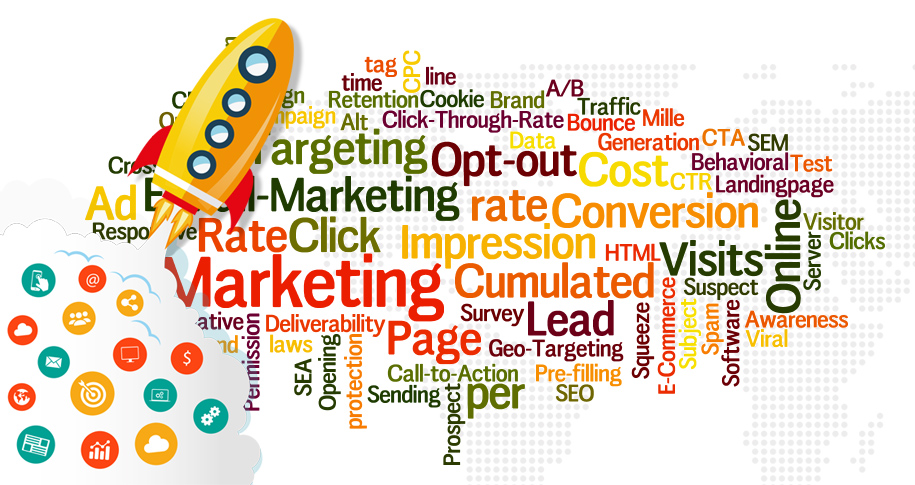What Is Data-Driven MarketingWhat Is Data-Driven Marketing?
Data-d... More?
Data-driven marketingWhat Is Data-Driven Marketing?
Data-d... More refers to using data collected from various sources to guide marketing decisions, campaigns, and strategies. By analyzing customer behavior, preferences, demographicsWhat Are Demographics?
Demographics r... More, and interactions with the brand, businesses can create more personalized, targeted, and effective marketing efforts. This approach ensures that decisions are based on real insights rather than assumptions, allowing businesses to allocate resources more efficiently and optimize their marketing ROI.
Why Is Data-Driven MarketingWhat Is Data-Driven Marketing?
Data-d... More Important?
- Improves PersonalizationWhat Is Personalization in Marketing?... More
With data-driven marketingWhat Is Data-Driven Marketing?
Data-d... More, businesses can tailor their messages to the specific needs and interests of individual customers. By using data such as past purchases, browsing behavior, and demographic information, marketers can send more relevant offers and content, increasing the likelihood of conversion. - Enhances Customer Segmentation
Data-driven marketingWhat Is Data-Driven Marketing?
Data-d... More allows businesses to segment their audience more effectively. By analyzing data points like location, age, interests, and buying habits, marketers can create specific customer profiles and target them with content that resonates with each segment. - Optimizes Marketing Strategies
By continuously analyzing data, businesses can measure the effectiveness of their campaigns and identify what works and what doesn’t. This allows marketers to adjust strategies in real time, ensuring that marketing efforts are always aligned with customer preferences and market trends. - Improves ROI
With accurate, data-based insights, companies can allocate their marketing budgets more efficiently, focusing on the channels and strategies that generate the best returns. Data-driven decisions minimize waste, ensuring that every dollar spent contributes to achieving business goals. - Predictive AnalyticsDefinition
Analytics refers to the sy... More
Data-driven marketingWhat Is Data-Driven Marketing?
Data-d... More allows businesses to leverage predictive analyticsDefinition
Analytics refers to the sy... More, which helps forecast customer behavior and market trends. By identifying patterns in historical data, companies can anticipate customer needs and tailor their campaigns to proactively address them.
How to Implement Data-Driven MarketingWhat Is Data-Driven Marketing?
Data-d... More
- Collect Relevant Data
Gather data from multiple sources, such as website analyticsDefinition
Analytics refers to the sy... More, social mediaDefinition
Brand awareness is the ext... More platforms, customer surveys, CRM systems, and email campaigns. The more data points you collect, the better you can understand your customers’ preferences and behaviors. - Analyze Data to Identify Trends
Use tools like Google AnalyticsWhat Is Google Analytics?
Google Anal... More, customer relationship management (CRM) software, and marketing automationWhat is Marketing Automation?
Marketi... More platforms to analyze data. Look for patterns, such as high-performing campaigns, customer behavior changes, and areas for improvement. - Segment Your Audience
Once you have sufficient data, segment your audience into smaller groups based on common characteristics or behaviors. This could include segments based on demographicsWhat Are Demographics?
Demographics r... More, past purchase history, or engagement with your website or emails. - Personalize Your Campaigns
Use the insights gained from data analysis to create targeted marketing messages. PersonalizationWhat Is Personalization in Marketing?... More could include sending tailored email offers, recommending products based on past purchases, or delivering content that matches users’ interests. - Measure and Optimize
Continuously track the performance of your campaigns and adjust them based on data insights. By using A/B testingDefinition
A/B Testing, also known as... More and other optimization techniques, you can continually refine your approach to maximize the effectiveness of your marketing efforts.
Challenges with Data-Driven MarketingWhat Is Data-Driven Marketing?
Data-d... More
- Data Privacy Concerns
With the increased use of customer data comes the responsibility of handling it ethically and in compliance with privacy laws. It’s important to ensure that data collection and usage practices are transparent and protect customer privacy. - Data Overload
With the vast amount of data available, businesses can struggle to extract meaningful insights. It’s crucial to focus on the data that truly matters for your goals and to use the right tools to manage and analyze large datasets efficiently. - Integration Issues
Gathering data from various platforms and systems can lead to challenges in integration. Companies may find it difficult to consolidate data from different sources into a cohesive system that provides a complete picture of customer behavior.
Meta Title:
Data-Driven MarketingWhat Is Data-Driven Marketing?
Data-d... More: Leverage Insights to Improve Your Campaigns
Meta Description:
Keyword:
